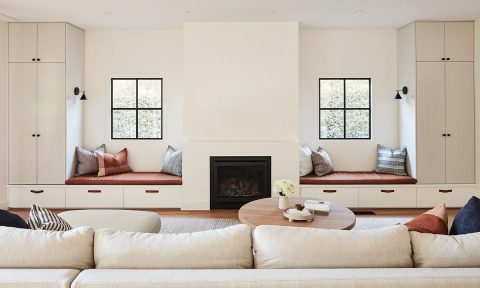Sponsored by Anterior XL
Vito Marzullo has a refreshing attitude when it comes to natural stone. He loves bold colours that aren’t same-same and don’t play it safe and he believes that natural stone, like leather and fine wine, gets better with age. In a world where we’ve become perhaps a little too obsessed with things being everything-proof, he says we should instead be embracing the beautiful patina of things as they age, just like they do in Europe.

He started Living Tiles back in 2003 but exited that business to start Anterior XL when he became a little bored of the small format. “Digital technology had changed the way tiles worked and everything became too samey. I needed a change,” he said. “I started Anterior XL with a focus on interior designers, architects and end users, concentrating on slab materials.” Starting this new business a few weeks before covid lockdowns kicked in, the challenges of sourcing without physically traveling forced Vito to work in different ways. And while he also deals in porcelain and terrazzo, it is natural stone that has his heart. “You just can’t compare anything to the beauty of it, it’s timeless.”
While porcelain is a relatively new slab material, Vito travels to Italy to seek out the best designs and quality from manufacturers and can offer more than 40 colours.
Whether it’s natural stone or porcelain, he identifies the gaps in the market for those looking for something a bit different, and tries to fill them. “I’m able to cherry pick, whether that’s a beautiful viola or a Tiffany green. While the majority of products we sell are more simple designs, everyone likes a pop of colour. Porcelain is now being used, for example, for dining table tops. This is a much less risky choice for people than a benchtop.”

When it comes to benchtops, Vito says we have become too obsessed with them being indestructible above all else. “The key difference between porcelain and stone is this: as good as the technology is now, porcelain is not very repairable. Repairs can be done, but it’s probably going to be visible. When you repair natural stone properly, you can’t tell.”
But you should expect your natural stone to age, says Vito. Which perhaps goes against what many manufacturers will push around things being bulletproof. “The first stain yes, perhaps, you worry about it, but eventually, with use, it gets this beautiful patina. The wonderful thing about Europe, as opposed to here, is that it’s old! You can walk into a bar with a terrazzo bench top and it’s got this shine to it because it’s been used for so many years, and it’s beautiful and unique. The age and imperfection of it is embraced. You go into a hotel in Rome and the stone might be stained and scratched. The expectations are low, it isn’t meant to stay perfect.”

Of course with the correct sealer and care, stone can be given warranties for five or 10 years. “But I can give you a definite guarantee, it will scratch and stain,” says Vito, who travels to Italy around four times per year. “But when you look at a natural stone with a porcelain next to it, there is no comparison whatsoever. It doesn’t even scratch the surface.”

Of course there will be people who continue to favour materials like porcelain (which is exempt from the imminent engineered stone ban), multi-unit developers for example, and Vito will continue to sell it. “There will also always be people who don’t want the same as everyone else has. They’ll choose the individuality of natural stone with all its flaws and imperfections.” And when it comes to which is cheaper, how long is a piece of string? There are natural stones priced anywhere from $250 to $5,000 a metre.

And you just can’t beat seeing slabs in person for yourself. Vito invites people to discover what’s on offer at his showroom in Sydney’s design district of Alexandria, conveniently and centrally located near to many other furniture and home suppliers.










